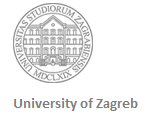SYLLABUS 2023
Course title: Phonetics and Phonology
Course ID: 235564
Hours: 3L + 1S
Instructors:
Professor Višnja Josipović Smojver
e-mail: visnja.josipovic@ffzg.unizg.hr
office hours: Tuesday15:00-16:30 – B-008
Mirta Stamenić, assistant
e-mail: mstameni@ffzg.unizg.hr
office hours: Tuesday 12:30-14:00 – B-008
ECTS credits: 6
Language: English
Status: compulsory
Semester: 6th (summer)
Enrolment requirements: Successful completion of the course of Semantics, as well as regular enrolment in the 6th semester.
Course description:
Students are taught the fundamentals of contemporary phonetics and phonology. The course starts with a survey of the basic notions of articulatory phonetics, focusing on the standard pronunciation varieties of British and American English (RP, SSBP, and GenAm). The students are familiarized with the basic approaches of contemporary phonological theory, which are applied to the analysis of the most important English pronunciation phenomena and the formulation of the basic English phonological rules. This also includes suprasegmental phenomena, which are analysed in terms of phonetic transcription, using IPA notational conventions.
Objectives:
Students should learn to approach English pronunciation descriptively, as opposed to the earlier prescriptive approach, which they were used to in the course of pre-university English learning. In order to develop this kind of approach, i.e., to learn how to describe English pronunciation phenomena in a scientific way, through this course the student should develop the ability of selective listening and master the basic notions and terms of phonological and phonetic description.
Obligatory literature:
Cruttenden, A. (2014). Gimson’s Pronunciation of English, 8th ed. London – New York: Routledge.
Josipović, V. (1999). Phonetics and Phonology for Students of English. Zagreb: Targa.
Lindsey, G. (2019). English after RP: Standard British Pronunciation Today. www.cubedictionary.org.
Reference literature:
Crystal, D. (2008). A Dictionary of Linguistics and Phonetics.6th edn. Oxford: Blackwell.
Pullum, G.K. & W.A. Ladusaw (1996). Phonetic Symbol Guide. The University of Chicago Press.
Trask, R.L. (1996) A Dictionary of Phonetics and Phonology. London:Routledge.
Wells, J.C. (2008). Longman Pronunciation Dictionary. 3rd edn. with CD: Person Education Ltd.
Further reading:
Ashby, M. & J. Maidment (2005). Introducing Phonetic Science. Cambridge University Press.
Gussenhoven, C. & H. Jacobs (2005). Understanding Phonology, 2nd edn. London: Arnold.
Hayes, B. (2009). Introductory Phonology. Wiley-Blackwell.
Josipović Smojver, V. (2017). Suvremene fonološke teorije. Zagreb: Ibis grafika.
Ladefoged, P. (2002). A Course in Phonetics, 4th edn. Boston, MA: Heinle & Heinle.
Zsiga, E. (2013). The Sounds of Language. An Introduction to Phonetics and Phonology. Oxford: Wiley-Blackwell.
Zsiga, E. (2020). The Phonology/Phonetics Interface. Edinburgh University Press.
Course requirements:
Phonetics and Phonology is a continuous assessment course. The final grade will be based on 3 online continuous assessment tests (CAT), as shown in the table:
|
|
CAT 1
|
CAT 2 |
CAT 3 |
|
topics (W) |
1-8 |
9-15 |
Transcription of connected speech |
|
maximum score |
45 points |
20 points |
35 points |
Obtaining the final grade:
A maximum of 100 points (45+35+ 20)
92 -100 = 5
84 – 91 = 4
73 – 83 = 3
65 – 72 = 2
For those who have not successfully completed the course through the regular (obligatory) CAT system, or want a higher grade, two remedial terms will be offered for re-taking CAT1, CAT2, or both. CAT 3 will be uploadable on the Omega in the period between June 15 and September 15, 2023 and cannot be repeated.
Those who have satisfied the criteria for passing the course and are not satisfied with their grade, an extra-point assignment for additional 5 points will also be offered at the end of the summer exam term.
Week by week schedule:
1. Introduction: Phonetics and Phonology; types of English pronunciation
2. Speech Production: continuity of speech; three branches of phonetics
3. Articulatory Phonetics: organs of speech and speech production
4. Articulatory gestures, segments of speech and distinctive features; IPA notation and transcription (1)
5. Acoustic phonetics (1): segmental level: spectrograms, Praat
6. English Consonants
7. Vowels: CV Scale
8. English vowels: vocalic systems and subsystems of the mainstream pronunciation standards
9. Phonological Theory: Segmentation of speech and basic notions of phonological analysis
10. Binarity and Distinctive Feature Theory
11. Phonological rules, domains and constraints, contemporary phonological theory
12. The syllable
13. Prosody: rhythm, intonation, typology
14. Connected Speech: coarticulation; universal phonetic processes; English connected-speech phenomena; transcription of English connected speech
15. Allophones and narrow transcription; variability and transcription of standard and non-standard connected speech



